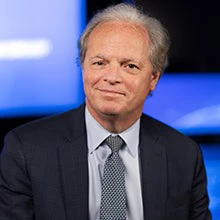 A sea of solar panels against a field of green.
A sea of solar panels against a field of green.
This blog originally appeared in the Globe and Mail on November 9, 2022
When world leaders gather in Egypt this week at the 27th Conference of the Parties climate conference, one question will loom large: Where is the money?
It’s a valid question. Developing countries need at least US$1.7 trillion per year by 2030 to support their climate action and transition to a low-carbon future. Making sure that money materializes is one of the great challenges of our time. The landscape is littered with a patchwork of climate pledges and repackaged announcements. It’s hard –sometimes impossible – to track what happens next. That lack of visibility becomes even more murky when commitments are based on targets beyond our lifetimes.
When I follow up with governments and business leaders on the status of their climate pledges, the answers too often lack the specificity and concreteness required to make real progress on the climate agenda. Even consummate data users like me find it difficult to decipher who is bringing real money to address the climate emergency in the near term, let alone where it is going and how it is being used. Marshalling public, private, concessional and commercial funds at scale – and ensuring the money is channeled to countries, sectors, projects and people in ways that can have a meaningful impact – requires much greater transparency and accountability.
Right now, however, we don’t have a solid handle on the basic numbers. That makes it much harder to make sure that poor countries have the resources they need to tackle a crisis they did not create. Helping people, especially the poorest and most vulnerable, understand how much money is being delivered and how it will benefit them will improve engagement and combat the cynicism and announcement fatigue that can plague high-level conferences. It can also improve confidence and inspire even greater investment.
After more than three decades working in international development, I have seen the value of transparency in these kinds of efforts. It reminds me of the push for greater aid transparency a generation ago, the Heavily Indebted Poor Countries debt relief initiative of the 1990s that I led for the World Bank, and the movement to improve the transparency of extractive-industry revenues in the early 2000s. More recently, debates have focused on debt transparency.
This time, the threat is existential. Global climate action is stalling. The consequences of inaction in developing countries are unimaginable.
If COP27 is the move from pledges to implementation – from talk to action – all public and private providers of climate finance must agree to publish their basic data. Every announcement this month in Sharm El Sheikh should be followed up at next year’s COP with an easily accessible report that everybody, from bankers to the general public, can understand. It’s the only way to bring real accountability to the challenge of climate finance.
Transparency is integral to what we do at the World Bank Group. That’s why our figures are publicly available, including the record US$31.7 billion that we delivered in climate finance last year to developing countries for both adaptation and mitigation. Around US$13.5-billion went to the world’s poorest countries, US$12.9-billion focused on adaptation and US$5.2-billion was delivered in full grants.
We are also delivering new country-level diagnostic work through our Country Climate and Development Reports, which bring together new and deeper data and analysis, and identify individual country needs, challenges and priority actions. We have recently published CCDRs for almost 15 countries, including China, Nepal, Rwanda, the G5 Sahel, Türkiye and Vietnam. Many more will be published in coming weeks.
Progress in the fight against climate change doesn’t have to remain elusive. Taking concrete steps to improve the transparency of climate finance is one simple way to bring our goals closer to reality – and to make sure that the poor and vulnerable don’t continue to endure the worst effects of climate change.


Join the Conversation